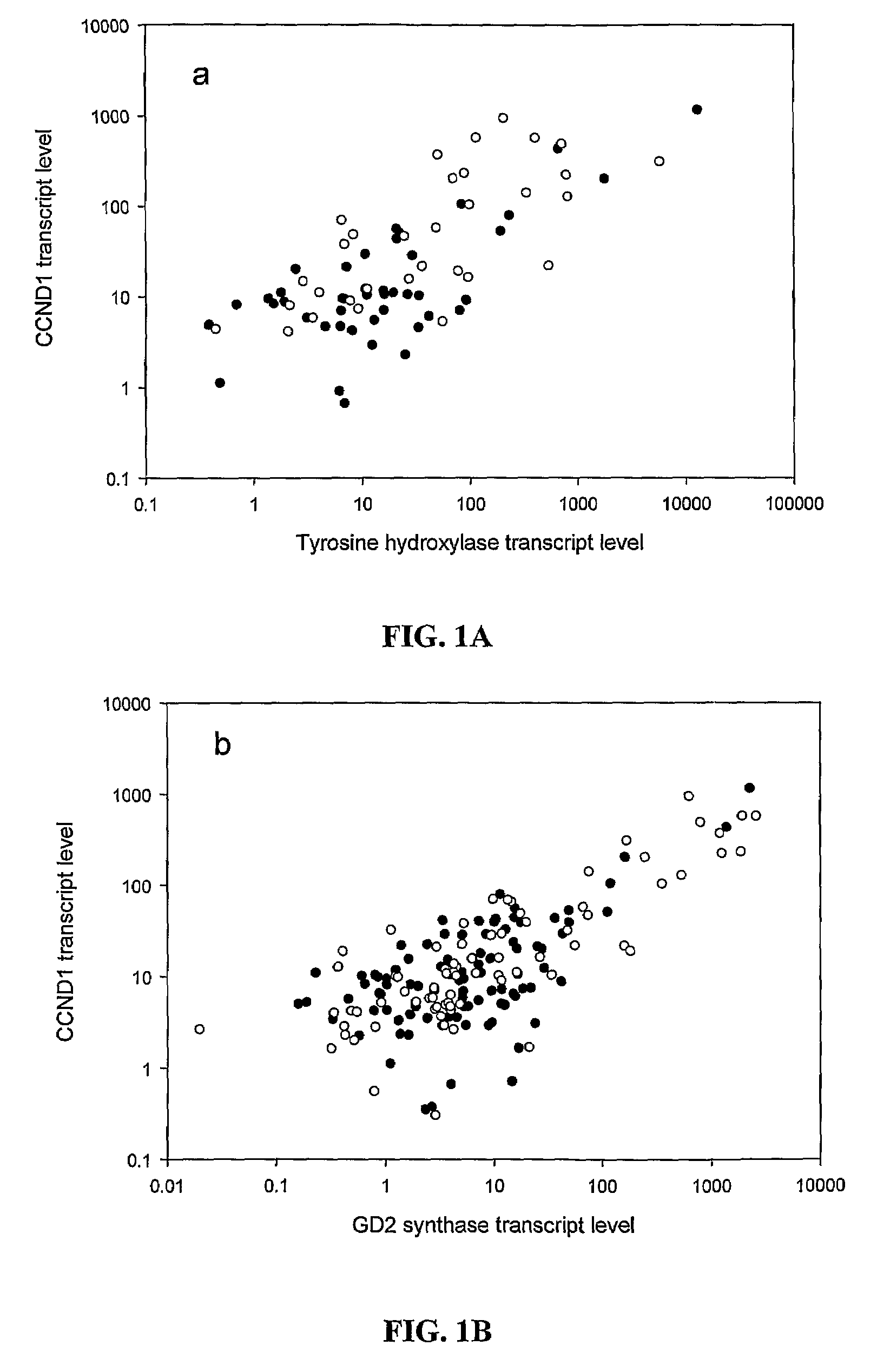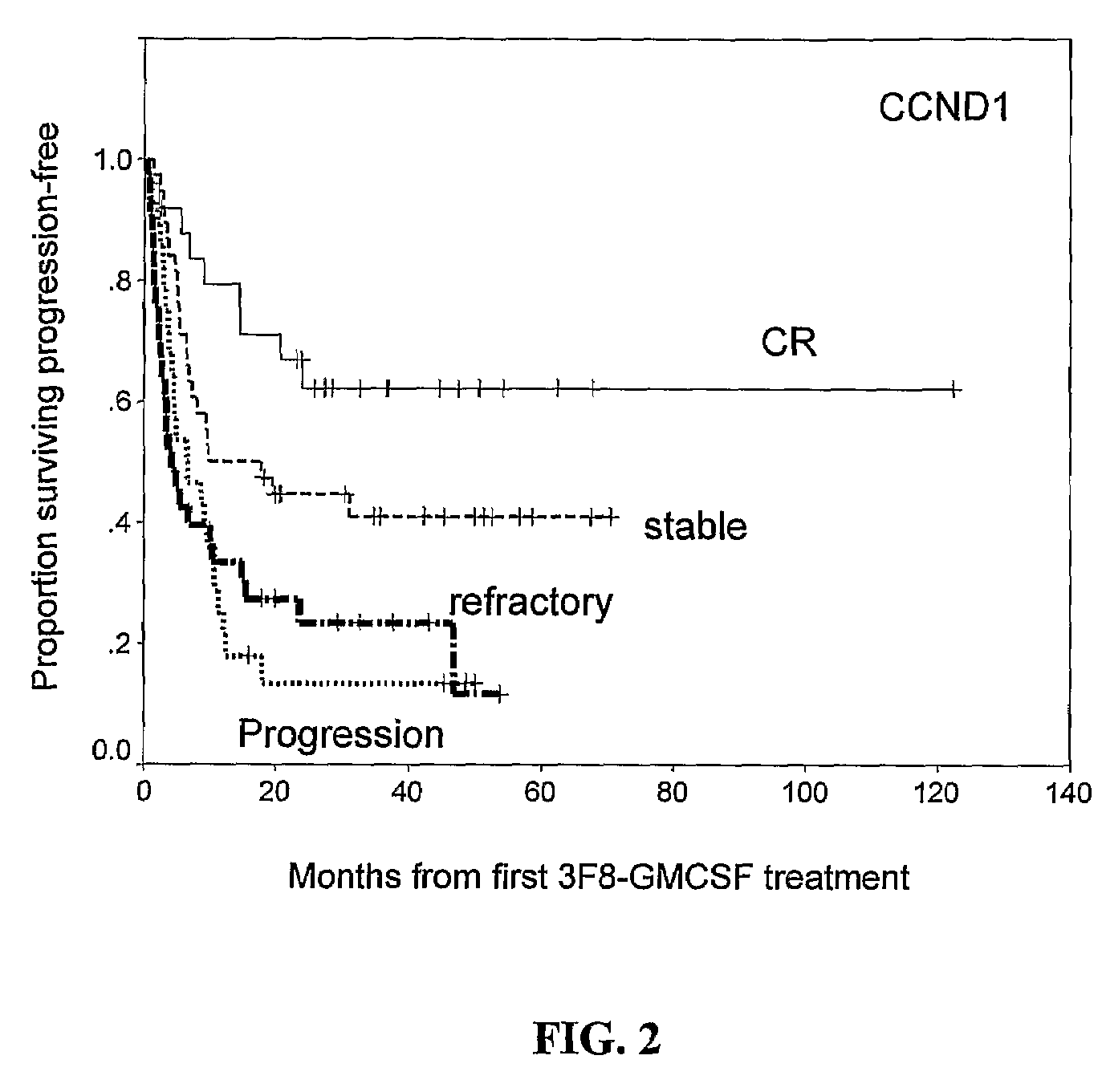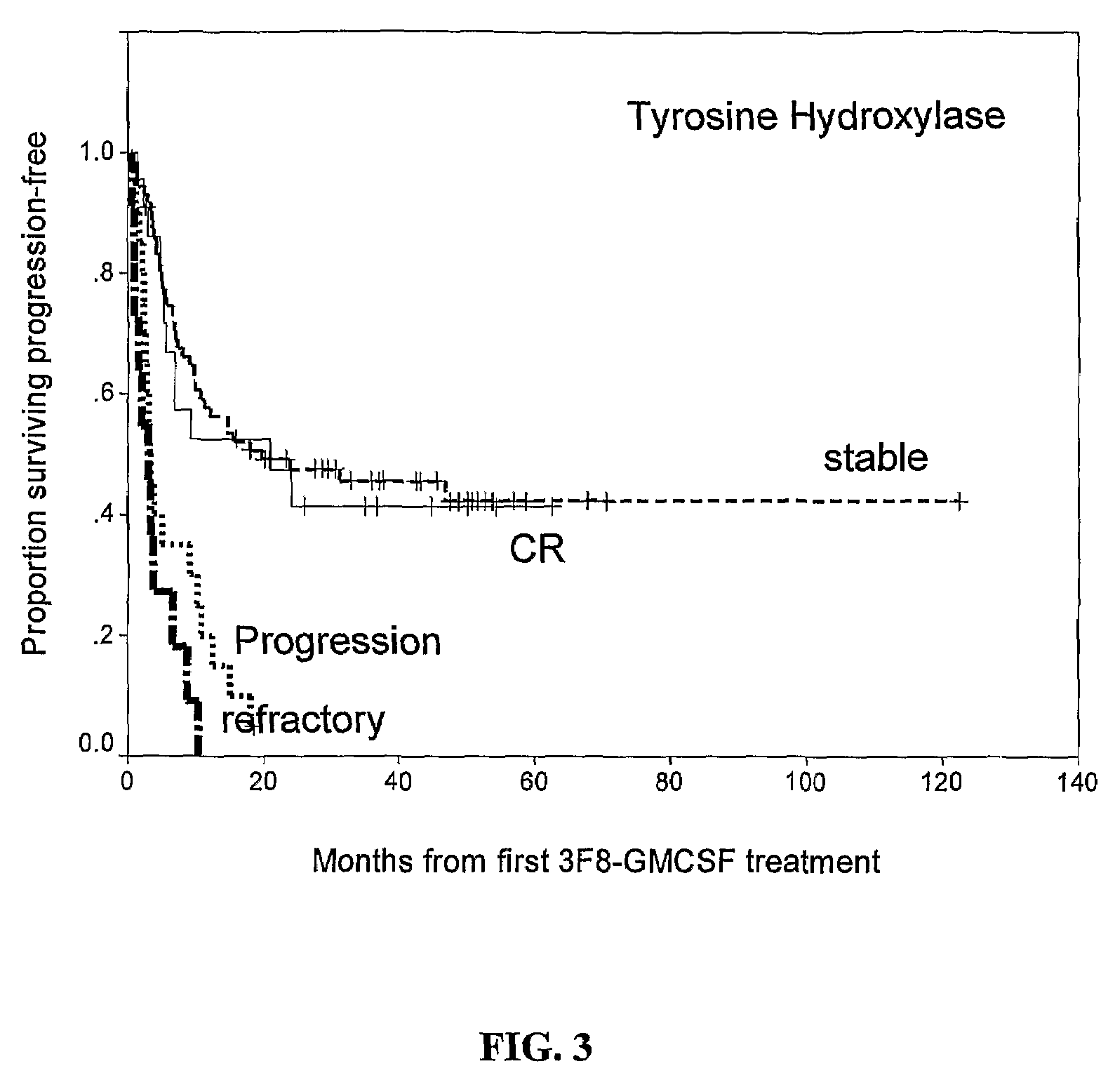Methods for detecting minimum residual disease
a technology of minimal residual disease and detection method, which is applied in the direction of microbiological testing/measurement, biochemistry apparatus and processes, etc., can solve the problems of limited specific and sensitive markers, limited dna from tumor cells measured by pcr, and difficult to cure cancer
- Summary
- Abstract
- Description
- Claims
- Application Information
AI Technical Summary
Problems solved by technology
Method used
Image
Examples
example 1
Identification of MRD Markers for Neuroblastoma Cells
[0088]Quantitative reverse transcription-polymerase chain reaction (qRT-PCR) is a highly sensitive method to measure tumor transcripts circulating in blood and marrow. It has previously been shown that GD2 synthase (β1,4-N-acetylgalactosaminyltransferase, GM2 / GD2 synthase, GalNacT) is a useful marker of MRD (Cheung I Y, Cheung N K: Quantitation of marrow disease in neuroblastoma by real-time reverse transcription-PCR. Clin Cancer Res 7:1698-705, 2001; Cheung I Y, Lo Piccolo M S, Kushner B H, et al: Early molecular response of marrow disease to biologic therapy is highly prognostic in neuroblastoma. J Clin Oncol 21:3853-8, 2003; Cheung I Y, Lo Piccolo M S, Kushner B H, et al: Quantitation of GD2 synthase mRNA by real-time reverse transcriptase polymerase chain reaction: clinical utility in evaluating adjuvant therapy in neuroblastoma. J Clin Oncol 21:1087-93, 2003). Others have described the utility of the tissue specific marker ty...
example 2
[0102]CCND1 expression in cell lines, neuroblastoma and other solid tumors CCND1 is known to be of general importance in human cancers. Activation of CDK4 and CDK6 by CCND1 induces phosphorylation of the retinoblastoma protein Rb, then the release of E2F transcription factors and subsequent progression of the cell cycle from G1 to S. Moreover, CCND1 is known for its overexpression in a wide variety of malignant adult (Donnellan, R., et al. 1998 Mol Pathol 51:1-7; Bali, A., et al. 2004 Clin Cancer Res 10:5168-77) and pediatric cancers (Baer, C., et al. 2004 Int J Cancer 110:687-94). In rhabdomyosarcoma and Ewing's sarcoma, expression array analysis has also identified CCND1 as a highly expressed tumor transcript (Baer, C., et al. 2004 Int J Cancer 110:687-94). Besides its clinical importance among embryonal tumors and sarcomas,
[0103]Pathol 51:1-7). It is overexpressed in nearly half of all breast cancers and in virtually all lobular carcinomas and estrogen-receptor positive ductal ca...
example 3
Molecular Response by CCND1 and Prognostic Significance
[0106]QRT-PCR of CCND1 mRNA and Correlation with TH and GD2 Synthase mRNA
[0107]Of the entire cohort of 136 patients, 124 patients had follow-up BM samples after treatment cycle #2, at a median of 2.5 months from protocol entry; 84% (104 / 124) were collected prior to treatment cycle #3, and 98% (122 / 124) collected prior to cycle #4. Median transcript levels of CCND1, and two established NB markers TH and GD2 synthase stratified according to disease status at protocol entry, are detailed in Table 3, below.
[0108]
TABLE 3Median transcript levels (units) of molecular markers CCND1, GD2 synthase, and tyrosinehydroxylase stratified according to patient status at protocol entryNumber ofNumber of patients positive for marker (Median)Tumor MarkerpatientsOverallCR / VGPR*1° Refractory2° RefractoryPDCCND1Pretreatment136673217711 (15.7)(15.5)(11.9)(10.9)(52.0)Post-treatment12461192499 (18.8)(13.6)(12.0)(101.9)(303.3)GD2Pretreatment136542117610...
PUM
| Property | Measurement | Unit |
|---|---|---|
| median time | aaaaa | aaaaa |
| minimum residual disease | aaaaa | aaaaa |
| resistance | aaaaa | aaaaa |
Abstract
Description
Claims
Application Information
 Login to View More
Login to View More - R&D
- Intellectual Property
- Life Sciences
- Materials
- Tech Scout
- Unparalleled Data Quality
- Higher Quality Content
- 60% Fewer Hallucinations
Browse by: Latest US Patents, China's latest patents, Technical Efficacy Thesaurus, Application Domain, Technology Topic, Popular Technical Reports.
© 2025 PatSnap. All rights reserved.Legal|Privacy policy|Modern Slavery Act Transparency Statement|Sitemap|About US| Contact US: help@patsnap.com



